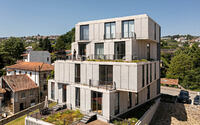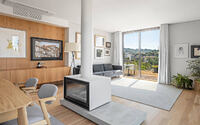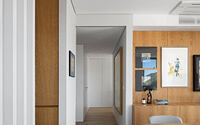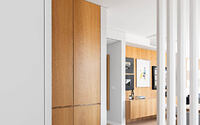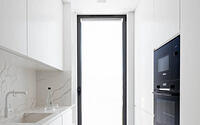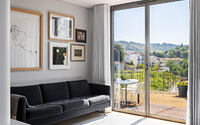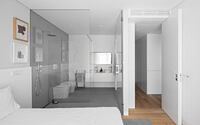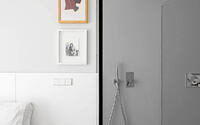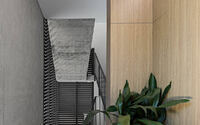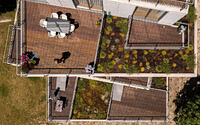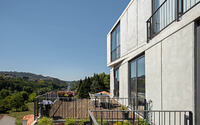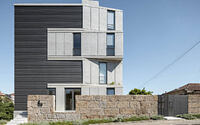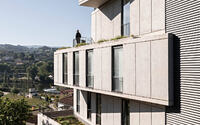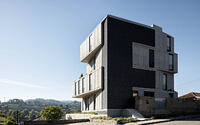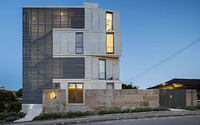Torre 261 by João Abreu
Torre 261 is a contemporary five-story apartment building located in Amarante, Portugal, designed in 2020 by João Abreu.














Description
Urbanistically, the plot meets two distinct scales. To the North, a scale of four and five storey buildings, to the South by the intersection of an access road to Rossio Park, after which the scale changes to a two-storey scale and single-family dwelling typology.
So that there are no flat and rigid gables and trying to relate to the various influences of the surroundings, we assume a rotation of the floors taking this displacement to four distinct elevations that cause particular movements and shadows.
This rotation allows for a game of different experiences in which the orientations of the apartments are different and with different points of view in contact with the surrounding landscape.
The development of the building follows on the ground floor the angle that the plot describes to the source, starting from that point the twists of the housing body, assuming the body of vertical communications as the aggregating element that closes the street front of a regular shape, but with its visually permeable cladding material, it reveals the development of the building in the remaining elevations.
The proposal is developed transversally to the terrain, allowing a greater use of the sun exposure as well as a lesser need for earth movement.
The form taken is based on an understanding of the place and its surroundings, and the ground floor seeks a more honest relationship with the ground at low level, assuming a regular basis in relation to the street front, and thus allowing that the other floors were reflecting the various influences of the surroundings, thus creating different framing points for each floor and the dwellings, thus giving them a unique and distinctive character, with each dwelling being an element with its own identities and characteristics. This play of volumes not only provokes distinct landscape framings, but also allows for unique outdoor spaces, as this space is always intimately linked to the relationship between the roof on the lower floor and the pavement slab on the upper floor.
In this context, the stairwell and vertical communications play an important role as they define the street front, aggregating all the floors and stabilizing an elevation quite marked by the movement and tensions resulting from these torsions.
The proposal includes a program with 4 apartments typology 2 rooms and two typology 3 rooms. Regarding T2 apartments, all of them draw their circulations inside the floor, thus always leaving the façade area for the rooms, allowing them to be in contact with the landscape and integrating it in all rooms as part of the decoration.
The same concept of landscape integration was transposed to the T3 typology, in which case the fact that it occupies the entire floor allows circulation right after the entrance hall of the house to clearly define the most public and most private space of the house, safeguarding this last.
Photography by Ivo Tavares Studi
Visit João Abreu
- by Matt Watts